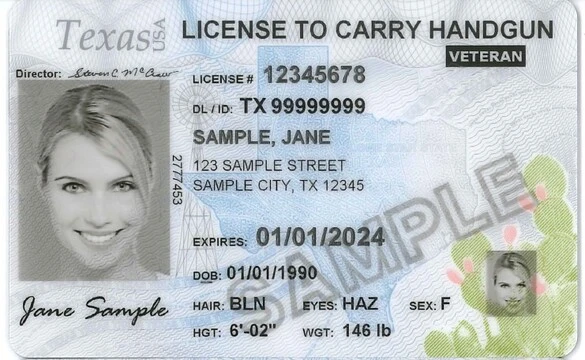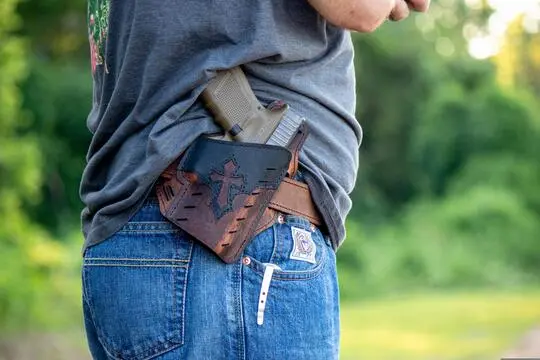Safety is paramount when it comes to firearms, especially at shooting ranges where multiple individuals are handling weapons simultaneously. This article delves into the shared responsibility of maintaining a safe environment at shooting ranges, emphasizing the crucial role of a Range Safety Officer (RSO) in this context.
Short Summary
- The article emphasizes the shared responsibility of maintaining safety at shooting ranges, with a particular focus on the role of a Range Safety Officer (RSO).
- Six basic gun safety rules form the foundation of safety at shooting ranges, and these rules are endorsed by various firearms training organizations.
- The RSO plays a crucial role in enforcing these safety rules, conducting pre-range safety briefings, monitoring adherence to safety protocols, and ensuring overall range safety.
- The article also discusses the importance of regular maintenance and inspections of firearms, the impact of alcohol consumption on firearms safety, emergency response protocols at
- hooting ranges, the importance of clear communication, and proper handling and storage of firearms.
- The RSO's role in enforcing safety rules, conducting safety briefings, and their continuous education are also highlighted.
- The article concludes by reiterating the shared responsibility of maintaining safety at shooting ranges and the significant contribution of RSOs in ensuring a safe shooting environment.
Understanding Safety at Shooting Ranges
The Six Basic Gun Safety Rules at Shooting Ranges
Every participant at a shooting range, from novices to seasoned shooters, must adhere to the six basic gun safety rules. These rules form the bedrock of safety protocols at shooting ranges and are endorsed by various firearms training organizations.
- Treat all guns as if they are loaded.
- Never point a gun at anything you are not willing to destroy.
- Keep your finger off the trigger until your sights are on the target and you have decided to shoot.
- Be sure of your target and what is beyond it.
- Never handle a firearm under the influence of alcohol or drugs.
- Store firearms so they are not accessible to unauthorized persons, especially children.
Some variation of each of these rules is supported and endorsed by the major firearms advocacy organizations (NRA, USCCA, NSSF).
The Role and Responsibilities of a Range Safety Officer
A Range Safety Officer (RSO) plays a pivotal role in maintaining safety at shooting ranges. Their responsibilities are diverse and crucial to ensuring a safe environment for all participants.
Enforcing Safety Rules
One of the primary responsibilities of an RSO is to enforce safety rules. They ensure that all participants adhere to the six basic gun safety rules and other specific rules of the shooting range. This includes monitoring shooters' behavior, intervening when necessary, and providing guidance to ensure safe practices.
Conducting Pre-Range Safety Briefings
Before any shooting activity begins, the RSO conducts a pre-range safety briefing. This briefing covers the basic safety rules, emergency procedures, and specific rules of the range. The RSO ensures that all participants understand and agree to follow these rules before they are allowed to handle firearms.
Monitoring Safety Protocols
The RSO is responsible for monitoring the adherence to safety protocols at the range. This includes ensuring that firearms are handled and stored correctly, participants are wearing appropriate safety gear, and communication protocols are being followed.
Ensuring Overall Range Safety
The RSO is tasked with maintaining overall safety at the range. This includes checking the condition of the range and equipment, ensuring that the range is free from hazards, and responding to any safety concerns or incidents promptly.
Being Prepared for Emergencies
Despite all precautions, emergencies can still occur. The RSO is trained to respond effectively in such situations. They are familiar with the emergency response protocols of the range and are equipped to provide first aid and coordinate emergency services if needed.
Providing Guidance and Assistance to Shooters
The RSO is also a source of guidance and assistance for shooters. They can provide advice on safe shooting practices, answer questions about firearms and safety gear, and assist shooters in handling firearms safely.
Enforcing Range Rules
In addition to the basic safety rules, each shooting range has its own specific rules. The RSO is responsible for enforcing these rules and ensuring that all participants are aware of and comply with them.
Continuous Education
The field of firearms safety is constantly evolving, and the RSO must stay updated with the latest safety practices and regulations. This continuous education enables the RSO to provide the most accurate and effective guidance to shooters and to maintain the highest level of safety at the range.
The role of an RSO is multifaceted and demanding, but it is also rewarding. By diligently performing their duties, RSOs contribute significantly to the safety and enjoyment of shooting sports.
Enhancing Safety at Shooting Ranges
While the role of the RSO is crucial in maintaining safety at shooting ranges, it's important to remember that safety is a shared responsibility. All participants can contribute to a safer shooting environment by adhering to safety rules, participating in safety briefings, and continuously educating themselves about safe shooting practices.
The Significance of Pre-Range Safety Briefings
Pre-range safety briefings are an essential part of maintaining safety at shooting ranges. These briefings, conducted by the RSO, provide participants with important information about the range's safety rules, emergency procedures, and other specific guidelines. By actively participating in these briefings, shooters can ensure they are well-prepared to handle firearms safely and respond effectively in case of emergencies.
Continuous Education for Range Safety Officers
Continuous education is not just important for RSOs, but for all participants at shooting ranges. The field of firearms safety is constantly evolving, with new safety equipment, practices, and regulations being introduced regularly. By staying updated with this information, participants can ensure they are following the most effective safety practices.
Maintaining safety at shooting ranges is a shared responsibility. While the RSO plays a crucial role in enforcing safety rules and guidelines, all participants must also take an active role in adhering to these rules, participating in safety briefings, and continuously educating themselves about safe shooting practices. By working together, we can ensure that shooting ranges remain safe environments for everyone to enjoy the sport.
Conclusion
Safety at shooting ranges is a shared responsibility that requires the active participation of everyone involved. From the Range Safety Officer (RSO) who enforces safety rules and conducts pre-range safety briefings, to the individual shooters who adhere to safety protocols and continuously educate themselves on safe shooting practices, everyone plays a crucial role in maintaining a safe environment.
The six basic gun safety rules form the foundation of safety at shooting ranges. These rules, along with the specific rules of each range, provide guidelines for safe behavior and practices. Regular maintenance and inspections of firearms, clear communication, and proper handling and storage of firearms are all essential aspects of safety.
The role of the RSO is multifaceted and demanding, but it is also rewarding. By diligently performing their duties, RSOs contribute significantly to the safety and enjoyment of shooting sports. Their continuous education ensures that they stay updated with the latest safety practices and regulations, enabling them to provide the most accurate and effective guidance to shooters.
In conclusion, the shared responsibility of maintaining safety at shooting ranges is a testament to the importance of safety in the sport of shooting. By working together, we can ensure that shooting ranges remain safe environments for everyone to enjoy.




